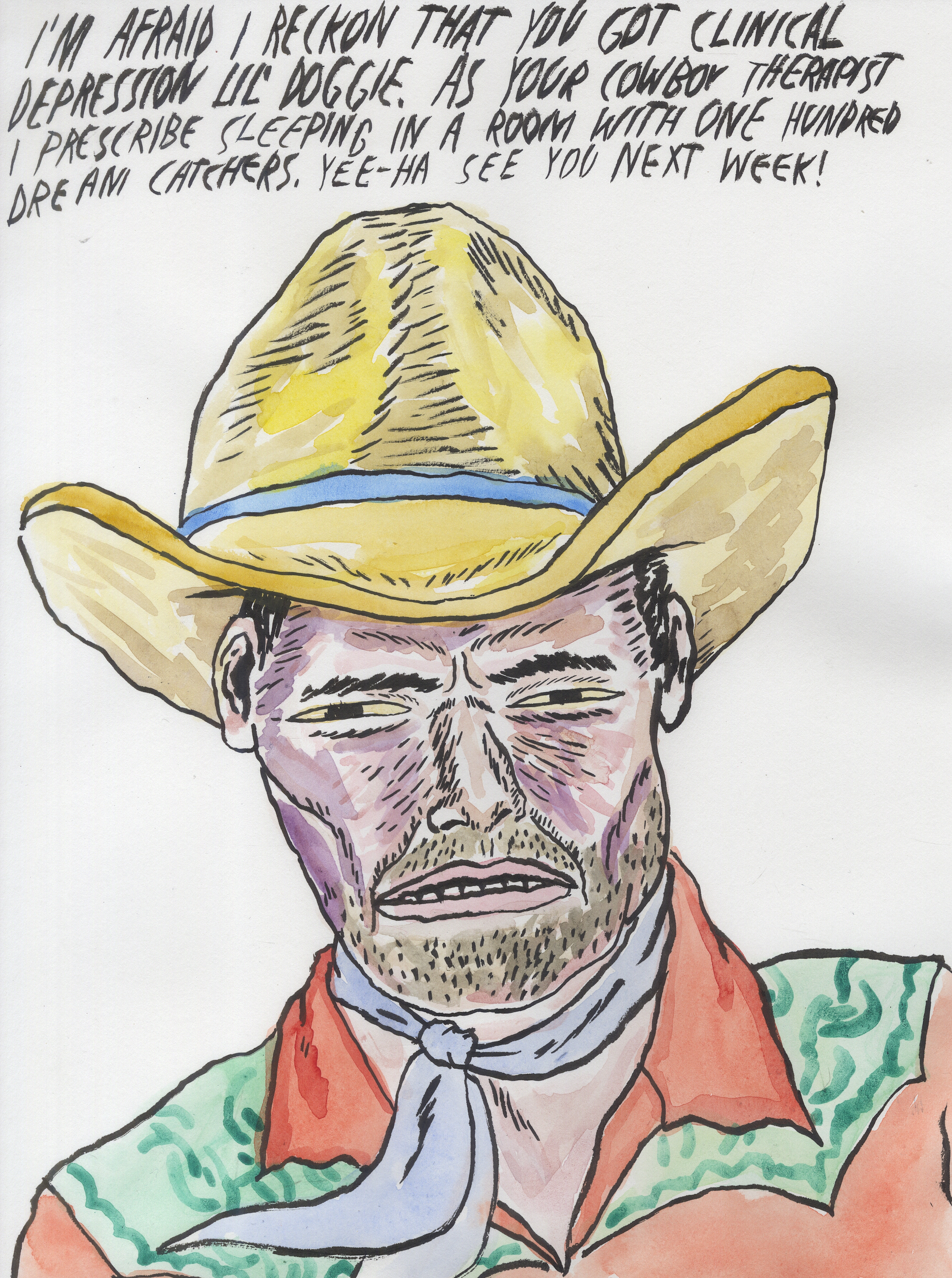A new study, published in Psychiatry Research, found that the basic assumptions of diagnostic categories in psychiatry are flawed and contradictory. The work was led by Kate Allsopp and a team of researchers at the University of Liverpool that also included such prominent figures as Rhiannon Corcoran, John Read (editor of the journal Psychosis, and author of numerous scientific articles, as well as the book Models of Madness: Psychological, Social, and Biological Approaches to Schizophrenia) and Peter Kinderman (former president of the British Psychological Society and author of A Prescription for Psychiatry: Why We Need A Whole New Approach to Mental Health and Wellbeing).
The researchers analyzed the language used in the diagnostic “Bible” of psychiatry. The researchers found that the diagnostic and statistical manual, or DSM, is internally inconsistent, undermining its own message. Its diagnoses are focused on both promoting a medical model in which the categories are known biomedical “disorders” while also providing clinicians ways to alter the categories and diagnose based purely on subjective judgment. In fact, the manual acknowledges that these “discrete disorders” are simply arbitrary categories. The researchers write,
“As the DSM-5 acknowledges that experiences do not always fit within the boundaries of a specific disorder, its rules are therefore internally inconsistent. The manual presents a classification of discrete, homogeneous disorders, yet acknowledges that this structure cannot always be followed due to the overlap between diagnostic categories.”

They continue, “The introduction of methods of clinical flexibility and transdiagnostic clinical features, such as ‘anxious distress’ or ‘psychotic features’, are contradictory to the DSM-5′s underpinning model of discrete disorders.”
One common argument in favor of psychiatric diagnosis is that it assists with research. Proponents of diagnosis argue that it allows researchers to create groups in order to test hypotheses. However, this only makes sense if the groups are meaningful—if the individuals within a group are similar in some way.
Unlike medical diagnoses, the criteria for psychiatric diagnoses are quite broad. According to researchers,
“In the majority of diagnoses in both DSM-IV-TR and DSM-5 (64% and 58.3% respectively), two people could receive the same diagnosis without sharing any common symptoms.”
Generally, for a medical disorder, one would expect similar symptoms in any two people with the disease.
Because of these broad, varied criteria, many of the individuals with the diagnoses might not have the specific symptom the researchers want to study. In this way, diagnoses actually hinder research by grouping very different individuals into arbitrary categories.
This also affects clinical work. In order to work with clients presenting with depression, for example, clinicians have two choices. They can follow the “evidence-based” treatments, which are based on average improvement of a large group of people, who may all have different “symptoms” or experiences—which means that there is no knowledge of who might or might not benefit from these treatments. In essence, clinicians are taking a shot in the dark based on the supposed similarity of people with depression.
On the other hand, clinicians can tailor their approach to the individual they’re working with. However, this is based entirely on the subjective beliefs of the clinician about what will work, rather than based on research.
Neither of these are a particularly scientific approach, according to Allsop and the other researchers. However, clinicians often rely on the “pragmatic” approach of tailoring their intervention to the individual client, which at least is based on the person rather than an arbitrary classification.
They write, “A pragmatic approach to psychiatric assessment, allowing for recognition of individual experience, may therefore be a more effective way of understanding distress than maintaining commitment to a disingenuous categorical system.”
The researchers conducted a thematic analysis of five chapters of the DSM. This allowed them to determine how the symptoms were framed within and between diagnoses.
For instance, in most situations it is entirely up to the clinician to define what has been “usual” or “normal” for their client.
Additionally, diagnoses such as PTSD are based on “symptoms” that are generally accepted to be normal responses to intense, severe traumatic events. Yet the diagnostic criteria do not specify at all how to determine when these normal responses become “abnormal” signifiers of “illness.”
The authors note that the DSM includes “Other specified” and “Unspecified” categories for each disorder as well, which do not include any criteria. These diagnoses allow clinicians to label service users even if they do not have any symptoms, based entirely on “clinical judgment.”
The researchers write that some diagnoses require the presence of “clinically significant distress,” which, of course, is defined by the clinician without an objective measure. However, some criteria allow clinicians to override even this subjective judgment and make a diagnosis for “a marked change” in functioning, even if the person is not experiencing distress.
Interestingly, the DSM-5 states that it is an “atheoretical” system of classification–that is, the diagnostic “bible” itself offers no theories as to how or why these supposed “disorders” emerge. However, one chapter is grouped according to theory–the chapter on PTSD. The disorders in this section require a prior exposure to life-threatening experiences that would be traumatic in any situation. The symptoms in this section overlap considerably with other sections, most notably with the diagnoses of depression and schizophrenia. Yet those two diagnostic categories make no mention of the possibility of trauma as a causal factor.
The researchers suggest that this is one of the greatest errors in the DSM: that it implies that trauma is only an important causal factor for very particular diagnoses, like PTSD. However, researchers have found evidence that trauma is implicated in the background of most diagnoses, despite attempts to label them as merely “biological.”
The categorization of the DSM obfuscates the impact of trauma and stressors (such as poverty and isolation) on human wellbeing. Even for PTSD, it implies that the response (avoidance, nightmares, etc.) to intense, life-threatening trauma is “disordered.” The researchers write,
“By making reference to trauma or stressors only in one dedicated chapter, the DSM-5 implies that other diagnostic categories are unrelated to trauma. The consideration of social, psychological, or other adversities within diagnoses is therefore minimised; symptoms are constructed as anomalous or disordered, rather than potentially understandable in relation to a person’s life experiences. Even within the trauma- and stressor-related disorders chapter, the experiences assessed, despite being specifically linked with trauma, are seen as symptomatic of a disordered or inappropriate response to that trauma.”
Thus, Allsopp and the other researchers suggest that the DSM is overall flawed, contradictory, scientifically useless, and that clinicians already barely use it (instead, clinicians already rely on pure subjective judgment).
Federal agencies are beginning to take note. The Superior Health Council of Belgium just issued a report advising “caution” in the use of diagnostic systems such as those used in the United States and European systems.
According to that report, “classifications do not provide a picture of symptoms, management needs and prognosis because they lack validity, reliability and predictive power.”
“A recovery-based approach (clinical, personal and social) better contextualizes symptoms and adapts interventions according to patients’ values, affinities and goals, working closely with them.”
****
Allsopp, K., Read, J., Corcoran, R., & Kinderman, P. (2019). Heterogeneity in psychiatric diagnostic classification. Psychiatry Research, 279, 15-22. https://doi.org/10.1016/j.psychres.2019.07.005 (Link)















This is why so many of us object to research on specific labels such as “schizophrenia”, “bipolar”, “borderline” etc being presented on MIA as if each represents a homogenous cohort within that discreet diagnosis or that the resulting findings could have any real-world validity or application.
Report comment
Yes, good point Kindredspirit, I agree.
Report comment
Kindred, you and I don’t like people trafficking in “schizophrenia”, “bipolar”, “borderline” .
How do you feel about someone on MIA trafficking in “neurodiversity”?
I am absolutely opposed to it under any conditions.
Report comment
The only significant thing about this piece of news is that Psychiatry Research admits what most familiar with the System have known forever.
It’s worth noting that 2 people can have the same “diagnosis” with no traits in common. Yet shrinks say we are all alike and should be subjected to the same “treatment” and psycho-therapists have told me I should only date others with my label. Since being called “bipolar 2” is way more important than life philosophy/religion, common interests, personal connection and life goals.
We’re all alike after all. 😛 Grrr!
Report comment
Wow, I have never heard of that one. I swear going by horoscopes might be a better choice than diagnoses. That’s super weird.
Report comment
Rachel. Maybe the dating adviser shrinks wanted to treat you by exposing you to torments while dating. Picture yourself filled with ambitious optimism dating someone so down they can barely get out of bed. Or you’re the one in the super doldrums while your date is filled with ambitious schemes for building the New Jerusalem. Or both of you are filled with ambitious schemes and gargantuan plans that don’t match each other (when you’re both down, neither of you will want to do anything, except maybe die).
Report comment
Lol. 😀 The real reason “mentally ill” often choose to only date each other is the reason lepers in leper colonies do. No one else will dare touch these social outcasts.
Not bashing those called SMI. Discrimination is real.
Report comment
Rachel, I’m sorry to hear you’ve encountered such obscene ignorance from psych “professionals”… while it’s not uncommon, I think the one you encountered might have been rare, so hopefully you have pictures so that we can document this new breed of callous bullshitter!
That said, I hope there’s hope for people like me who have “woke to psychiatry’s bullshit” on their list of must’s in a partner. Can we do a MIAmatchmaker.com or something, to help us find like-minded singles? lol (except i would totally sign up)
Report comment
Not interested in dating now. Trying to pick up the shards of my life. My body is slower to heal than my soul oddly enough.
Looking for work. Too old for kids so I’ve lost all romantic interest.
I don’t think Melissa meant to give me callous BS. She honestly believed there was some invisible bond between everyone labeled “bipolar” so only we can understand each other. Well–it does sound like BS now that I think of it. 😀
Almost married a fellow “bipolar” I had little in common with. He had the mind of an 8 year old and wanted a mother.
Maybe try POF or OKCupid? Wait till they really know you before sharing your story.
Report comment
Call Mr. McLaren!! New evidence is now coming forward that Psychiatry is Bullshit! Who would have known he was right??
Thank you again, Peter!!
Report comment
In how many ways, in how many journals, by how many people, for how many years must this “news” be told to the DSM deluded “professionals,” prior to them flushing their BS DSM “bible?” Thanks to the authors for their persistence in speaking the truth.
Report comment
‘The categorization of the DSM obfuscates the impact of trauma and stressors (such as poverty and isolation) on human wellbeing. Even for PTSD, it implies that the response (avoidance, nightmares, etc.) to intense, life-threatening trauma is “disordered.” The researchers write’,
perhaps we can start naming cultural disorders like – (such as poverty and isolation) yes and there’s so much more to ‘choose’ from
school
most jobs
debt
few communities
exhaustion
crushing routines
miles of endless miles of traffic jams
people crammed onto trains
glaring florescent tubes
targets
mental health services causing huge amounts of staff to suffer while making it almost impossible for them to offer a humane attempt at care
habit forming cultural disorders lurk everywhere
algorithm mania
click bait tick disorder
sugar with my everything disorder
day time television or having the DTTees.
frantic typing disorder
persistent micromanagement disorder
phq9 and gad7 partial delusion pickle lobes
psychobabble courgettes
professionals in denial disorder
professional babble my way out of a brown formulation disorder
registered nincompoop production line of suffering disorder
standing in long queues for years of my life compulsive disorder
will work for food disorder
anyone care to join in?
Report comment
Nice post, Topher, and important article. As the late Mickey Nardo often pointed out on Boring Old Man we have completely forgotten what diagnoses were supposed to be used for– just a general shorthand so one clinician can describe symptoms and presenting issues to another.
The only way I find diagnoses useful is during consultation, usually by saying which dx does not fit, like, “The delusions aren’t quite like schizophrenia, maybe more like complex trauma, the auditory hallucinations remind me of crystal meth, though not as pervasive, and the depressive symptoms are definitely not Major Depressive Disorder.”
Medical professionals take diagnoses way too seriously, they are supposed to be shorthand, not an if-this-then-that guide to prescribing or treatment! It’s just as bad as using an assessment instrument as an outcome measurement in research when even the assessment instruments are extremely coarse, and require judgment and cooperation between clinician and the person they are treating. Topher mentions the GAD7 and the PHQ9– when these are most useful is when the person filling out the questionnaire writes their own comments in the margin!
Report comment
There are many worrying things about the current situation – more and more people are educated to self identify with a disorder or four – the so called anti stigma and mental health awareness advocates appear to be promoting not mental health but self identifying with mental illness narratives – Daily I meet people that describe a huge amount of suffering as those I listed above and yet they seem to miss the obviousness of their situation and tell me I think i’m OCD, or my last therapist told me I have GAD or whatever label you care to choose.
Mental health services in general seem to be locked into a business model of creating customers and completely overselling their wares – the services I work in proclaims 6-10 sessions of a brief talk therapy will furnish the suffering with the skills to be their own therapist! I mean talk about false advertising and besides most of the therapists I know, myself included have no more ability to cope with life than anyone else does – if life brings suffering into being suffer we will just like everyone else.
The entire IAPT model is hinged on the PHQ9 and GAD7 – two subjective questionnaires that can tell us almost nothing except someones best guess at how they may or may not be feeling in a given moment of time – yet these measures are god almighty – continued services funding, micro management, massive staff burnout and empty notions of recovery are all bound up with how someone scores on those measures and this is all anyone seems to care about – a persons life could be in pieces but as long as enough people pleasing, placebo and subtle manipulation can be generated and the person scores ‘below clinical’ well now they are suddenly in ‘recovery’ it is really beyond a joke – this experience has taught me about the power of institutions and ideology tied to self interest and how harmful things can become very quickly
Report comment
Topher, business model indeed. The first paragraph of what you wrote is especially telling, and given that having these labels does actually open a person to discrimination, it’s like the “anti-stigma” crowd is really pro-stigma. Sadly, a lucrative business model… effective, too, when one recognizes as you have that calling bullshit effectively ropes you into it against your will. Totally self-contained, anything human can create growth in that industry it seems.
Beyond a joke.
Report comment
I have, at various times, tried to trick my (old-school, psychodynamic, 80-year-old) shrink into telling me what my diagnosis is.
But he never bites. I don’t think he really believes in diagnoses, either.
Not to go galloping off on a tangent, but this raises another interesting point: Do therapists need to be free of the issues that they’re treating in others?
My supervisor always said, “Absolutely.” However, in clinical training, it seemed like I could treat other people’s depression even if I was depressed, and their substance use even if I was using substances myself. I got rave reviews from my clients on the feedback questionnaires at my training site– and I kept asking my colleagues, “How is it possible that they are getting better while I keep getting worse?” No one had anything like a good answer. I occasionally run into people I treated during this period, and they still tell me how much I helped them. It was the stupidest damn thing I could imagine– at the rate I was going, by the time I had helped 50 people, I would be ready to be hospitalized myself. My depression, drinking, and road rage kept slowly getting worse.
And then it all stopped– started doing 12 step, got my foot off the gas, I still get just as sad and anxious, but not for nearly as long.
Now it’s more the way my supervisor said… I may actually have better coping skills than the people I work with, it kind of feels like that.
But honestly, I have no idea why, and I feel like it could have gone the other way just as easily. I mean, my own shrink is very good, and that’s obviously part of it– I want to be a bad-ass, and he totally models that, just really calm, great sense of humor, nothing phases him, and impossible to intimidate. But I don’t know if that accounts for it. Sometimes I think I just lived long enough to see what was on the other side of what was standing in my way– and maybe my shrink and buddies in 12-step, as well as my friends and family, helped me get there in my mid-50s instead of having to wait until my 70s.
Report comment
Not only might two people with the same diagnosis not have much in common… an individual easily lands up with more than one diagnosis. Who exactly is responsible for agreeing diagnostic criteria? If governments are dismissing the DSM as irrelevant or flawed, what is keeping them in place? Or – what has to happen for them to be banned from use?
Do we know? Is activism our most effective approach?
Report comment
“The DSM; “Scientifically Meaningless” Diagnoses”
Yeah, we know.
Report comment
What a relief, I thought I “lacked insight” 😉
Report comment
That it should take a committee to discover that the DSM volumes are meaningless drivel doesn’t say much for present-day psychiatry.
Report comment
Well said!
Report comment
Thanks for this information Peter. This puts yet another huge dent in the whole harmful facade of psychiatry. So glad for the honest researchers and other professionals who are not scared to speak the truth.
Report comment
So as DSM is meaningless, we don’t want to be replacing it with some new manual based in the Moral Improvement FYOG model.
Get rid of ALL MENTAL HEALTH DIAGNOSIS MANUALS!
Report comment
“In general, the DSM-5 represents a shift to-
wards the perspective of the observer, whereas several DSM-IV-TR di-
agnoses relied on the individual as the principal (or only) source of
information. […] Represented within this shift towards the perspective of the observer is
an assumption about insight and the capacity to self-report; an as-
sumption frequently associated with psychotic experiences. However,
this assumption is not explicitly stated in the diagnoses, and therefore
reinforces the fallacious assumption that all people experiencing mental
health problems tend to ‘lack insight’. […] The
perspective here demonstrates the power held by the assessing clinician
(or others, such as family) by virtue of the diagnostic criteria sanctioning the making of a value judgement.”
“By making reference to trauma or stressors only in one dedicated
chapter, the DSM-5 implies that other diagnostic categories are unrelated to trauma. The consideration of social, psychological, or other
adversities within diagnoses is therefore minimised; symptoms are
constructed as anomalous or disordered, rather than potentially understandable in relation to a person’s life experiences. Even within the
trauma- and stressor-related disorders chapter, the experiences assessed, despite being specifically linked with trauma, are seen as
symptomatic of a disordered or inappropriate response to that trauma.”
Report comment